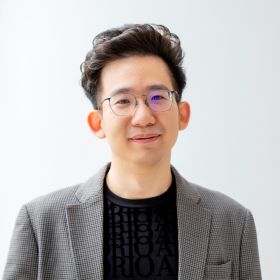People
Ta-Wei "David" Huang
Ta-Wei "David" Huang
“HBS is a place where I have access to companies, and I have professors who have extensive industry knowledge and embrace cutting-edged methods to address the most challenging issues faced by practitioners. I get everything I want here.”
As a data scientist, David Huang (he/him) spent much of his time analyzing customer¬ data to provide personalized experience and improve long-term customer values for companies in different industries. As David explains, “I loved developing new methods and ways to think about customer relationship management and using causal inference / machine learning tools to solve marketing problems.” It was this motivation that led him to pursue a Ph.D.
Initially, David’s familiarity with HBS was limited to the MBA program but he quickly realized how different the Ph.D. in Marketing was from the master’s program. He began to look at faculty research interests at HBS and quickly realized that there was a great deal of overlap between his interests and the faculty at Harvard. He found the research of Eva Ascarza, Elie Ofek, and Shunyuan Zhang especially compelling. “The faculty care about whether research can bring real-world impact to firms, consumers, and policymakers.” The continued connection to the industry felt like the right fit for David. “HBS is a place where I have access to companies, and I have professors who have extensive industry knowledge and embrace cutting-edged methods to address the most challenging issues faced by practitioners. I get everything I want here.”
David has found his mentors to be especially generous with their time. “They genuinely want you to become a successful researcher and are willing to spend a lot of time to discuss your ideas and project.” After coming from industry to graduate school, David particularly found the guidance from faculty especially helpful as the faculty formulate research ideas that contribute to existing literature and address the real-world challenges.
As a student, David has taken advantage of courses at Harvard and at neighboring MIT, where students can cross-register into courses. While the program has course requirements, David found that he had a great deal of flexibility in structuring his courses in a way that makes sense for his research interests. “I can discuss with my advisor and decide what kinds of courses are the right fit for me to build my research skills. I’ve been able to take whatever courses I want, as long as it’s useful to me. Courses from Computer Science, Statistics and Economics in Harvard and MIT, so I can absorb everything interesting and apply things I’ve learned in my own research.”
David’s advice for those who are currently working in industry and considering applying to Ph.D. programs is to, “Use the statement of purpose to think about what you want to do. There’s often an information asymmetry, especially for international students, about faculty’s research interests. Therefore, it is very important to look carefully at faculty research (especially working papers) to find a program with many faculty members you want to work with,” he explained. Because business is so interdisciplinary, David looked broadly for schools where faculty members were researching machine learning and causal inference. “Having access to different disciplines and the ability to apply different methodologies is one of the most important things for me in considering a Ph.D. program.”
Research
David’s current research is two-pronged. The first project is examining some commonly held assumptions about how firms target interventions. David has identified systematic biases in the traditional approach and is seeking to find a better way to address the issues by combining causal inference, machine learning, and marketing theories.
Another interesting project looks at food vending machines in a particular setting. Historically, Firms provide personalized information by considering preferences elicited by the historical customer data. However, given the nature of food consumption, customers usually switch between the variety-seeking and inertia modes. He's working to build a model to detect changes in customers' variety-seeking propensity and design better recommendation strategies based on customers’ states.

